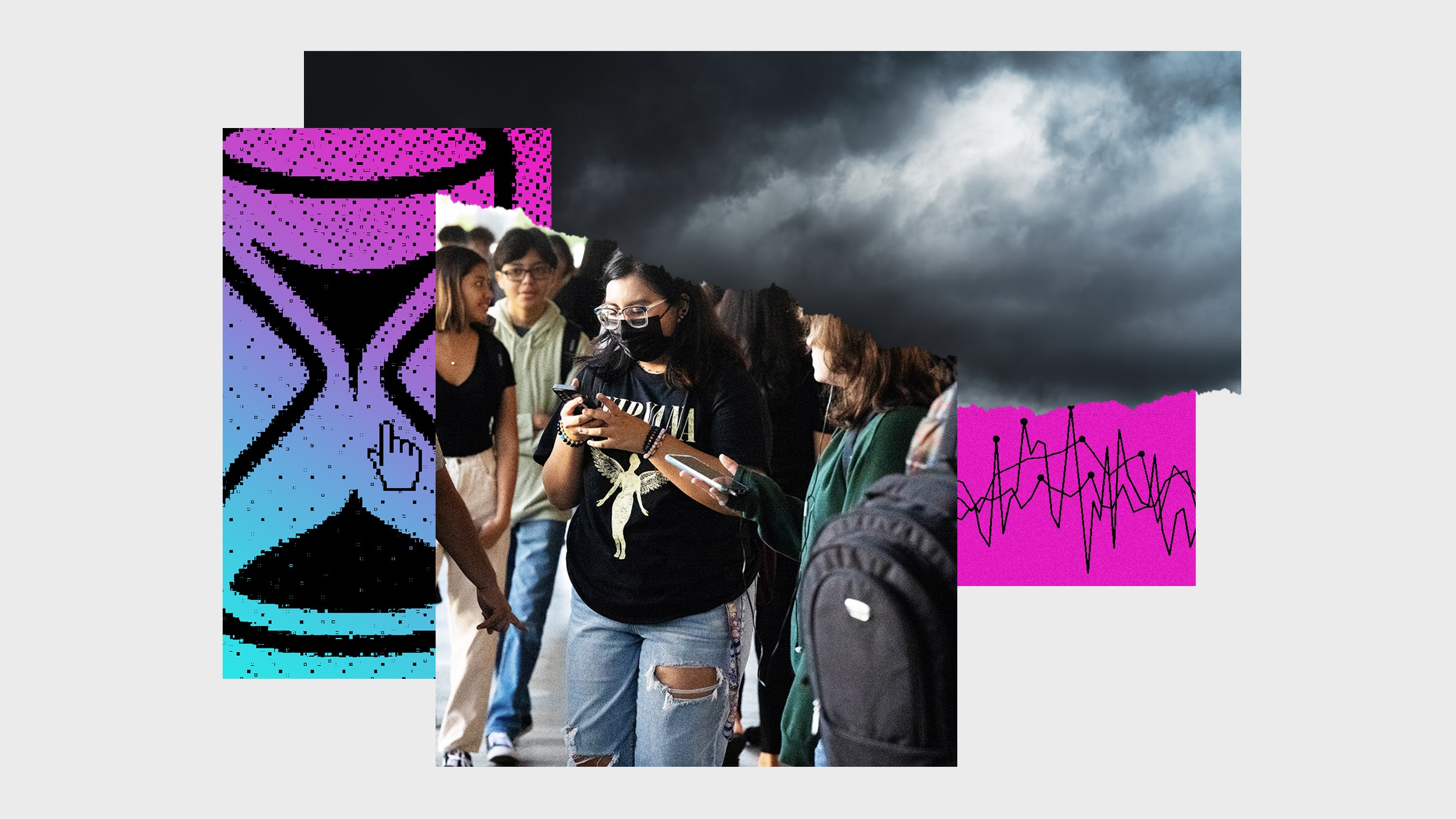
TikTok’s Screen-Time Limits Are the Real Distraction
Strict time limits—whether imposed by parents or tech companies—make the complexities of mental health and social life seem tantalizingly easy to address. But, as Devorah Heitner, author of Screenwise: Helping Kids Survive (and Thrive) in Their Digital World, says, “Just counting the minutes of ‘screen time’ won’t tell you everything you need to know.” Heitner advocates conversation rather than surveillance and constraint, asking children questions about their experiences, online and off. Helping young people develop a healthy relationship to screens and social media is significantly harder work than just shutting off the tap.
People have been worried about the possibility that screens (TVs especially) were having deleterious effects on the youth of America since they first hit the market. The phrase “screen time” bubbled up into mainstream consciousness in the early 1990s with a Mother Jones article by commentator Tom Engelhardt. Engelhardt’s essay is a pointed exploration of the way that advertising seeps into children’s television and a critique of TV aesthetics that dull rather than enliven young minds. Despite the relative nuance of his argument, Engelhardt’s coinage of the phrase “screen time” helped solidify our contemporary obsession with time, the counting stats of media exposure rather than its content. The screen-time moral panic that’s developed over the past 30 years has absolved parents of having to figure out how screens were or weren’t eroding the minds of the kids who use them. They could just focus on quantity.
TikTok’s move to limit the time kids spend on the app is not so different from the “Screen Time” feature that’s come standard-issue with most Apple products for the past five years. In 2018, Apple introduced Screen Time as part of its iOS 12 software package. It heralded the arrival of this feature by saying, “By understanding how they’re interacting with their iOS devices, people can take control of how much time they spend in a particular app.” But what Screen Time could help us understand was always secondary to what it could make us feel. Specifically, it made us feel bad, guilty, out-of-control. The feature notably offers no suggestions for healthy amounts of screen time, no helpful norms or target goals. Rather, it gives us charts and graphs that neatly, and stylishly, reflect what we already fear about our screen use; namely, there’s too much of it. The more mystical feature of Screen Time is that it was a place to displace our anxiety about, well, screen time.
As we now confront a decade during which young people—especially teen girls and LGBTQ+ teens—feel increasingly unhappy and under threat, and a culture still reeling from the mass death and estrangement of a pandemic, screen time has yet again surfaced as a convenient patsy. These ubiquitous screens, and the time we spend with them, are the avatar for all manner of social and personal quagmires. Screen time is a multipurpose moral panic.
Features like Screen Time and TikTok’s new restrictions are built on the understanding that time spent on our devices is the root of all our problems. While apps have cropped up to help us set and achieve step-count goals and reading goals and even mental agility goals in recent years, there are no achievements in regulatory tools like Screen Time, only failures. TikTok tells you your time is up and then, with the press of a button, gives you more. Apple sends you an alert that asks you to look at your screen, and then it makes you feel bad for looking. As Ian Bogost put it shortly after Screen Time’s release back in 2018, features like this only manage to make your “self-loathing more self-aware.”

